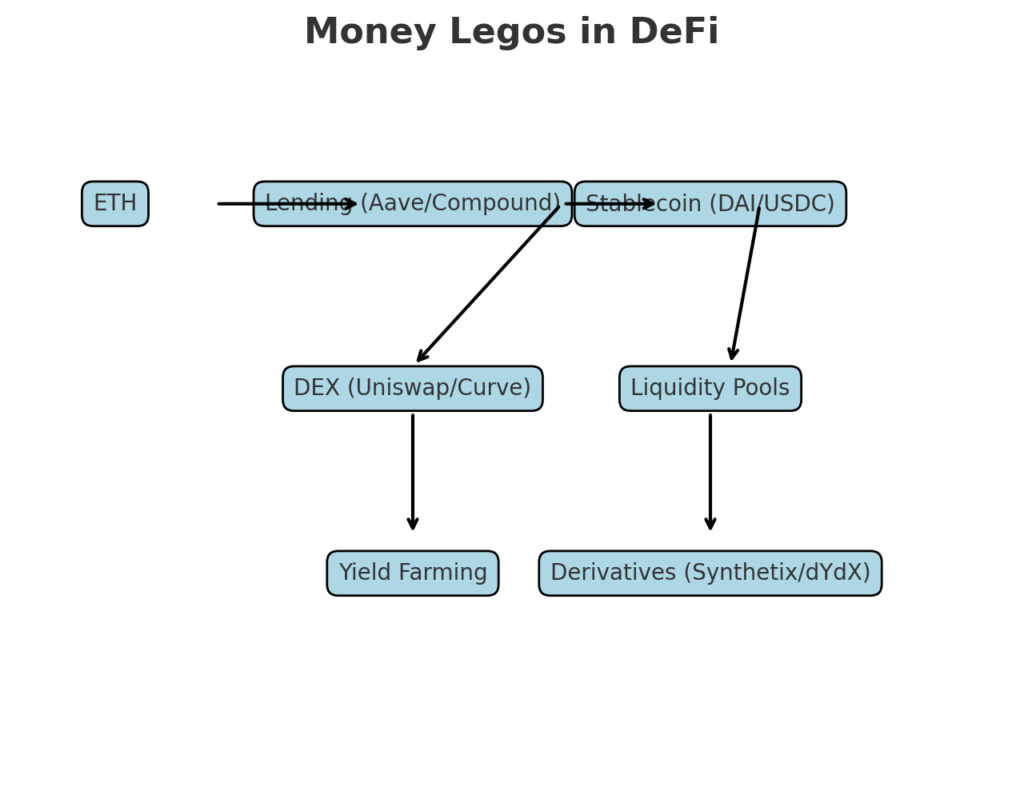What Are Money Legos in DeFi?
🔹 What are Money Legos?
In DeFi, “money Legos” is a metaphor for the composability of decentralized financial protocols.
Just like Lego blocks can be stacked and combined to build something new.
DeFi protocols are built on smart contracts that can be combined to create increasingly complex financial products.
🔹 Examples of Money Legos in Action
- Lending + Stablecoins
- Deposit ETH into Aave or Compound → borrow DAI.
- Use that borrowed DAI to farm yields elsewhere.
- DEX + Lending
- Swap tokens on Uniswap or Curve, then provide liquidity to earn fees.
- Collateralize LP tokens in MakerDAO or Aave to borrow more assets.
- Derivatives + Yield Farming
- Use Synthetix to mint synthetic assets.
- Stake them in yield farms or hedge positions using dYdX.
🔹 Why They’re Important
- Composability → Protocols are open-source and permissionless, so developers can stack them together freely.
- Innovation speed → New products are created by combining existing protocols instead of reinventing the wheel.
- Capital efficiency → Assets can be reused multiple times across protocols (sometimes called “rehypothecation”).
🔹 Risks
- Smart contract risk: If one Lego block fails, the whole stack might collapse.
- Liquidation cascades: Over-leveraged positions can cause chain reactions.
- Composability risk: Bugs or exploits in one protocol propagate to all protocols built on top.
✅ In short: Money Legos = composable DeFi building blocks that let you mix-and-match lending, borrowing, trading, and yield farming protocols to create new financial products.
